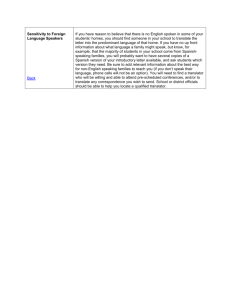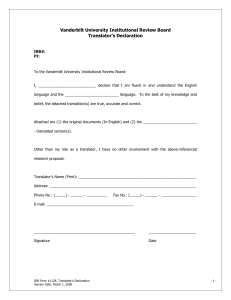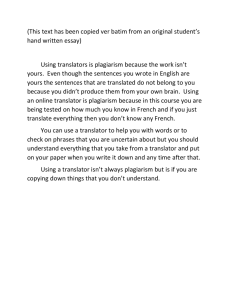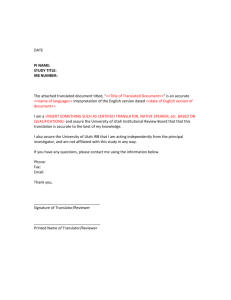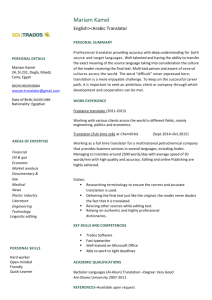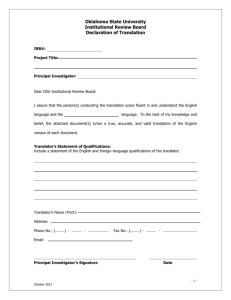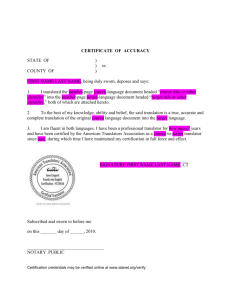Sample Abstract - St. Francis Xavier University
advertisement
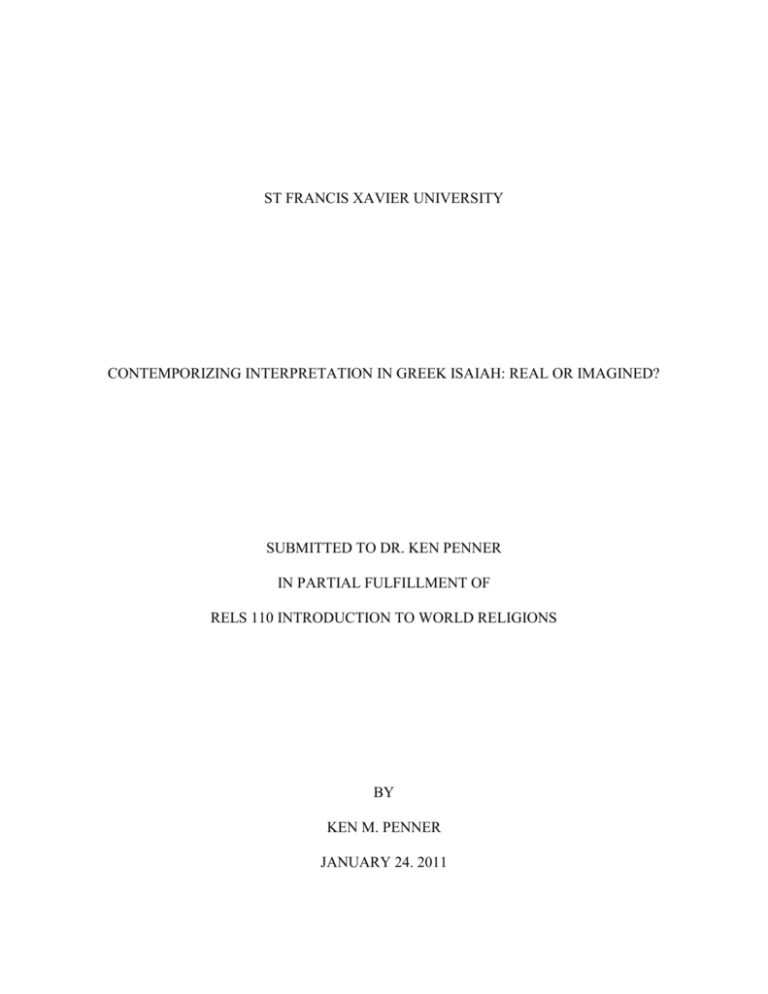
ST FRANCIS XAVIER UNIVERSITY CONTEMPORIZING INTERPRETATION IN GREEK ISAIAH: REAL OR IMAGINED? SUBMITTED TO DR. KEN PENNER IN PARTIAL FULFILLMENT OF RELS 110 INTRODUCTION TO WORLD RELIGIONS BY KEN M. PENNER JANUARY 24. 2011 Although the Greek translation of Isaiah differs considerably from the Hebrew text, the reason for these differences has been hotly contested. Those who first studied these differences in Isaiah over a century ago (Scholz, Ottley, and Swete) noted that major differences between the Greek and Hebrew were very few, but minor discrepancies abounded. They therefore concluded that the Hebrew text from which the translator worked was very similar to our Hebrew text, but they questioned the competence of the translator to render that text carefully. However, within the last century a new explanation for the differences has become dominant. Seeligmann, followed by das Neves, Hanhart, Koenig, and van der Kooij, argued that the translator found the fulfillment of Isaiah's "prophecies" in his own time. Recent proponents of this explanation claimed that many of the differences were intentional, a result of a method called variously "fulfillment interpretation," "actualization," or "contemporizing." Most recently, Ron Troxel has argued that the differences are not the result of a contemporizing "method," but the translator wanted the translation to convey the sense of the original oracles. This paper argues that the significant differences between the Greek and the Hebrew texts are mainly the result, not of a contemporizing method, but rather of the translator's incompetence or carelessness. I will do so by first demonstrating that most of the differences are not readily explained by a contemporizing method, secondly by showing that the differences are explainable as either mistakes or updating with no change of referent, and thirdly by arguing that the mistakes are better attributed to the translator than to the copyist of the Vorlage. 1 BIBLIOGRAPHY Michener, James. The Source. New York: Random House, 1965. Shanks, Hershel, ed. Ancient Israel: from Abraham to the Roman destruction of the Temple. Washington: Biblical Archaeology Society, 1999. 2
